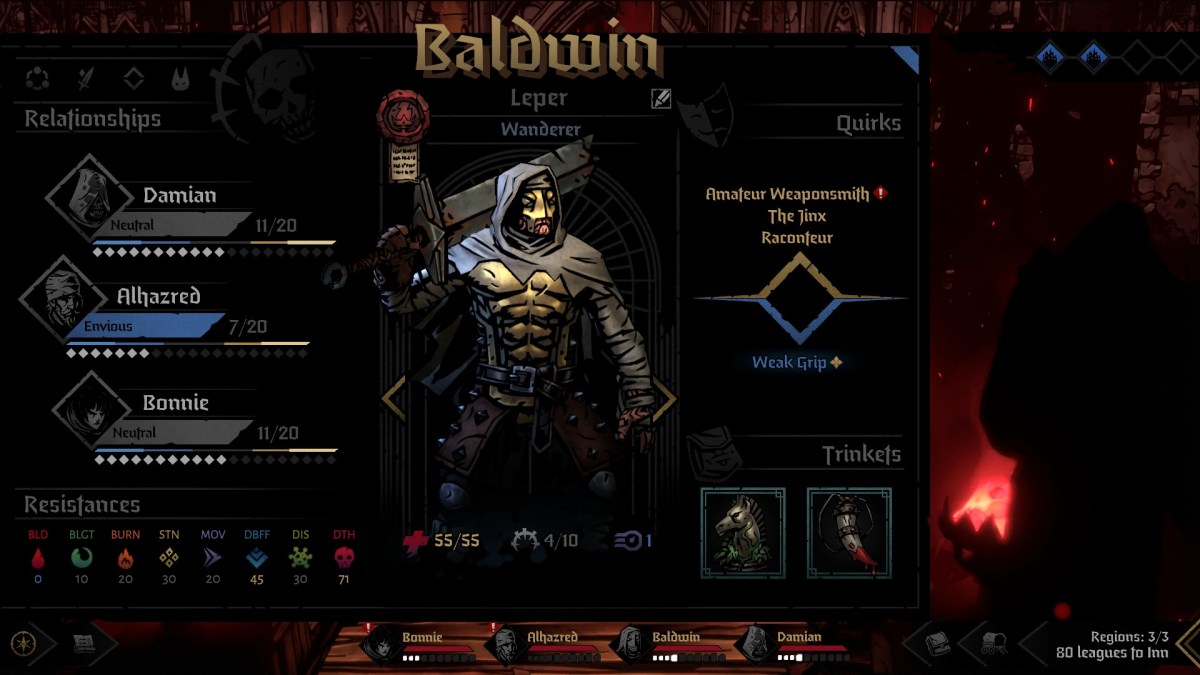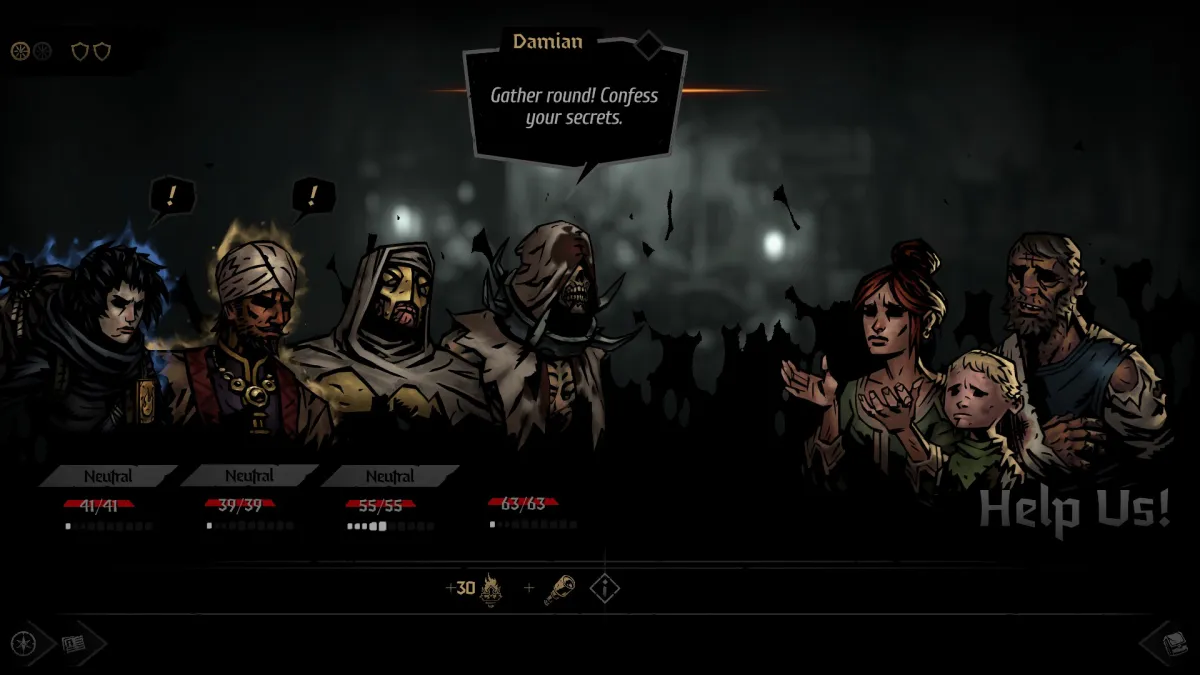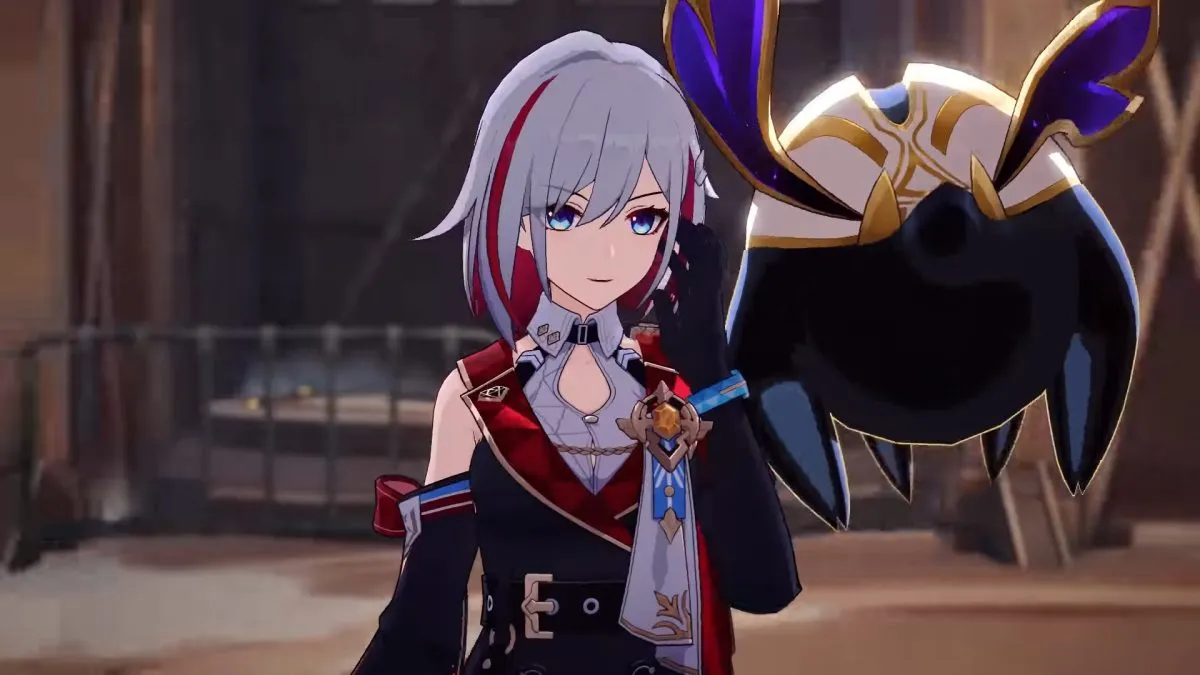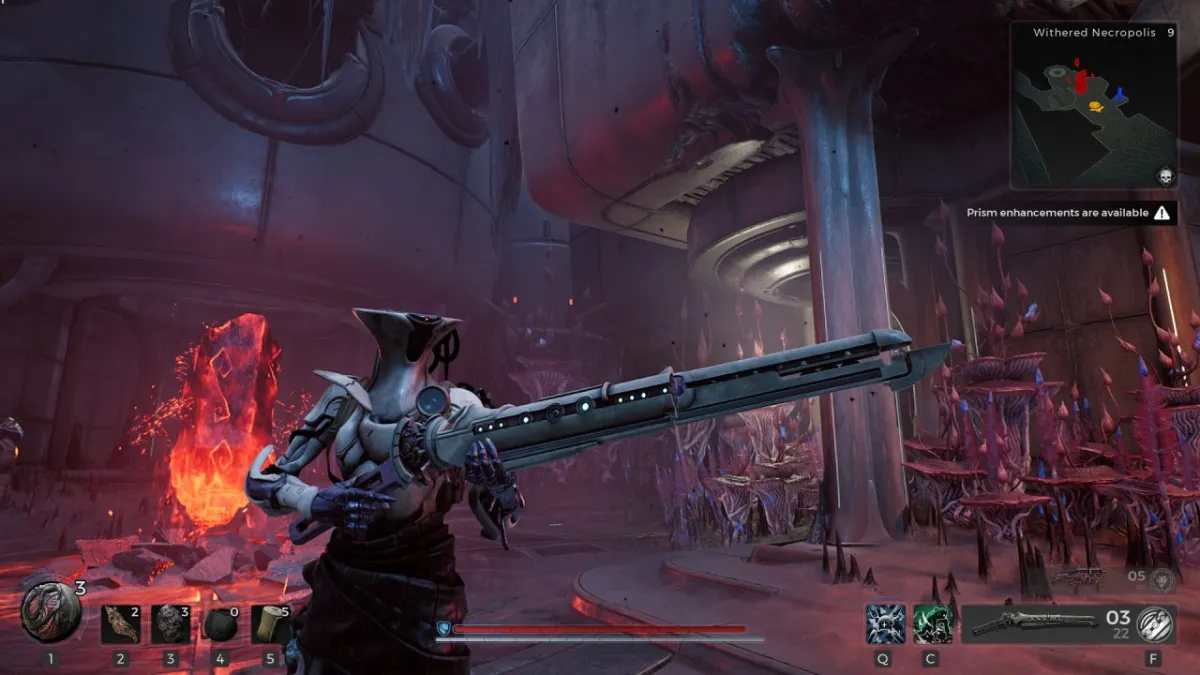Darkest Dungeon 2 brings a host of new features to the already-stacked table of the original, most notable among them being the Affinity system. This is a new mechanic that governs the relationships between each character in your party, and it’s one that can have very real consequences in combat, both positive and negative. For this reason, it’s important to wrap your head around just how you can build Relationships and Affinity in Darkest Dungeon 2, so that you’ll be able to make the best possible choice at every point in your run. Read on to learn how to do just that.
The mechanics of friendship: A guide to Relationships and Affinity in Darkest Dungeon 2
What are Affinity and Relationships?
Before we delve any deeper into the system, it’s best that we define the terms associated with it first. Affinity is the value that determines the nature of each pair of characters’ Relationship within your party. There’s an Affinity value for every pairing, so three in total, and these exist along an axis from 0-20, with 0 being extremely negative and 20 being extremely positive. At the start of each run, every pair will have an Affinity value of 10, or neutral, and various decisions you make and events you encounter will cause these values to increase or decrease as you progress. But more on those later.
Relationships are the results of your Affinity values. After resting at an Inn, there’s a chance that two characters in your party will form a Relationship, either positive or negative. The former can occur if their Affinity is over 10, and the latter can occur if their Affinity is under 10. The more points away from 10 you go, the more likely it is that a Relationship will be formed between two characters, but chance does always have a part to play in the proceedings. Relationships have a range of different effects, some of which can be run-defining, but we’ll cover those later on in the guide.
Gaining and losing Affinity
Now that you know what Affinity is, let’s cover how you can gain and lose it. Changes in Affinity values for pairs of characters can occur at three distinct times: during combat, while traveling in the Stagecoach, and after making a decision at a location such as an Assistance Encounter. Together these cover the majority of your time playing the game, so you should be prepared for changes in your party’s Affinity to occur at almost any time.
You have more control over some of these changes than others. While out on the road, for example, the Affinity changes you’ll encounter are based largely on the Quirks each of your characters has, and their current Stress levels, so you can avoid negative results here by keeping your Stress to a minimum and removing negative Relationship Quirks at a Field Hospital.
During combat, Affinity changes tend to be based on hidden factors. They can occur when you heal one character when another is also low on health, or when you move past a character, or when you land the killing blow on an enemy that another character wanted to finish off themselves. It’s hard to plan around in-combat Affinity changes, but if you pay attention to them when they occur you can avoid repeating the same actions in future, or intentionally repeat them, if the results were positive.
- Screenshots by PC Invasion
Affinity changes from choices at locations are the most straightforward of the three. When you make a choice like this, the resulting effects on the Affinity within your party will be shown in advance, ensuring you’re fully informed on the consequences of the action you’re about to take. These are great opportunities to patch up rocky Relationships or bolster good ones, since the Affinity outcomes are guaranteed, so use them wisely when you get the chance.
The effects of Relationships
Now that we’ve covered Affinity, let’s take a look at what it leads to: inter-character Relationships. As mentioned above, these can be either positive, such as ‘Respectful’, or negative, such as ‘Envious.’ The effects of these Relationships are twofold: they add Blessings or Curses to Skills each Relationship member has, and they allow said members to act independently of your orders in combat, either to the benefit or hindrance of their Relationship partner, depending on its nature.
These effects can be hugely impactful, and may even be the difference between life and death in a heated battle. A Skill with a Blessing may apply a Dodge buff to the other member of the Relationship, for example, incentivising its use more often. On the other hand, a Cursed Skill may add a point of Stress to the other member of the Relationship with each use, making it a less tempting prospect than before. It’s worth noting that Cursed Skills cannot be unequipped, meaning they’ll be stuck in your loadout for the rest of the run, and you’ll need to either ignore them or play around their new drawbacks.
- Screenshots by PC Invasion
The additional independent actions are a huge deal also. These effectively serve as free turns, with characters in positive Relationships reducing the others’ Stress at random, or even taking or dealing out additional hits alongside them at times. On the other hand, negative Relationships can see characters increasing each others’ Stress, and even attacking their Relationship partners at random. You have no control over when these additional actions will occur, but it’s good to be aware of them and plan out your strategy accordingly, particularly if it’s a negative Relationship you’re dealing with.
And there we have it! A complete run-down on how Relationships and Affinity work in Darkest Dungeon 2, and how you can build them to your advantage. Inter-party relations are truly the second battlefield in the game, and learning how to master it will serve you well in all your future campaigns.















Published: May 11, 2023 02:54 pm